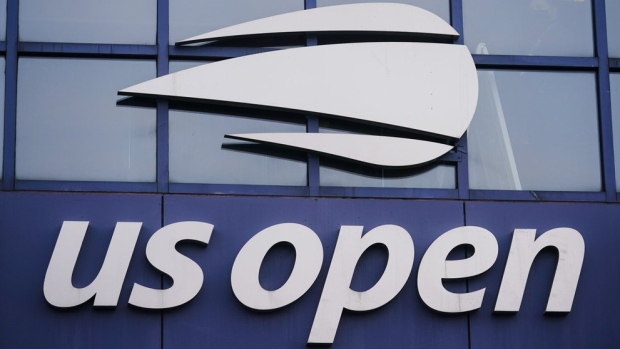7h ago
Not everyone is thrilled about a big prize and big names in US Open mixed doubles
The best of the best at doubles, meanwhile, are not so excited about what one of last year's mixed champions in New York, Sara Errani, labeled “sad” and "nonsense” in an interview with The Associated Press. She and Andrea Vavassori, who'll be defending their title, are the only true doubles team competing Tuesday and Wednesday at Flushing Meadows.
The Canadian Press

Grand Slam singles champions such as Jannik Sinner, Carlos Alcaraz, Iga Swiatek and Madison Keys will be playing for a little extra money — OK, a lot of extra money, by any standard: $1 million to the winning duo — and trying to get their hands on a trophy in the U.S. Open's overhauled mixed doubles tournament.
The best of the best at doubles, meanwhile, are not so excited about what one of last year's mixed champions in New York, Sara Errani, labeled “sad” and "nonsense” in an interview with The Associated Press. She and Andrea Vavassori, who'll be defending their title, are the only true doubles team competing Tuesday and Wednesday at Flushing Meadows.
A year ago, only two highly ranked singles players participated.
“It would be like if, at the Olympics, they didn’t let the actual high jumpers participate, and instead had basketball players compete in the high jump because it’s more ‘interesting.’ If you want to do that, I guess you can, but you can’t award them medals," Errani said. "You can’t have a Grand Slam doubles (trophy) and not let doubles players take part. ... You’re excluding them from their sport. It's dishonest.”
Who is playing in the 2025 U.S. Open mixed doubles tournament?
The top seeds, based on their combined singles rankings, are Jessica Pegula, the 2024 U.S. Open runner-up, and Jack Draper, a semifinalist a year ago. He's onto his third partner after Olympic champion Zheng Qinwen and former No. 2 Paula Badosa withdrew with injuries. Their initial opponents might be the most-anticipated pairing: five-time Slam champ Alcaraz and 2021 U.S. Open winner Emma Raducanu.
Other teams include Sinner and 10-time major doubles champion Katerina Siniakova, Swiatek and Casper Ruud, Keys and Frances Tiafoe, Venus Williams and Reilly Opelka, Taylor Fritz and Elena Rybakina, Naomi Osaka and Gael Monfils, Novak Djokovic and Olga Danilovic, and Daniil Medvedev and Mirra Andreeva.
“It’s going to count as a real Grand Slam. The prize money is great,” said Fritz, the runner-up to Sinner in singles at Flushing Meadows a year ago. “We are 100% there to try to win it.”
Said Tiafoe: “Seeing the prize money, everyone was like, ‘We’re going, no matter what.’”
What is different about mixed doubles at the U.S. Open?
What's different? Put plainly: everything. That includes the top prize of $1 million a year after Errani and Vavassori split $200,000.
Even the rules are changing, with sets played to four games instead of six until Wednesday's final, no-Ad scoring, and match tiebreakers instead of a third set. There are 16 teams instead of 32. The matches were shifted from the latter stages of the U.S. Open, overlapping with singles, to before next Sunday's start of the main singles brackets. Half the field is based on singles rankings, and the other half was simply chosen by the U.S. Tennis Association.
That's how the singles stars got involved. It's also why some say the whole thing is a bit silly.
Gaby Dabrowski, a Canadian who owns two major championships in mixed doubles and earned the women’s doubles trophy at the 2023 U.S. Open, tried to get into the field with Felix Auger-Aliassime, but they were not among the USTA’s wild-card selections.
“Do I think it’s a true mixed doubles championship? No. Do I think it could help the sport of doubles in the end? It could,” Dabrowski said, “but not if you can’t have any doubles players play in it.”
Why are some players upset about the U.S. Open mixed doubles changes?
Like Errani or Dabrowski, doubles players aren't thrilled about being excluded and losing out on a payday.
They also think it's generally demeaning to doubles specialists — even if the USTA thinks this can help boost the popularity of doubles.
“When you get the biggest names playing doubles, it does bring a bit more attention to it,” said Joe Salisbury, a British player who’s won two Grand Slam titles in mixed doubles and four in men’s doubles, “but I’m not sure it’s good for the doubles event, because it’s not really a proper event. It’s just a two-day exhibition.”
Tournament director Stacey Allaster objects to that sort of characterization.
“Let’s be absolutely crystal clear: This is a Grand Slam championship. It is not an exhibition,” Allaster said. “We’re sympathetic to the doubles specialists who don’t like this change. ... (But) we know that when fans see top players competing ... this is going to inspire more fans to not only attend but to play tennis, and it’s ultimately going to grow the sport.”
___
Howard Fendrich has been the AP’s tennis writer since 2002. Find his stories here: https://apnews.com/author/howard-fendrich. More AP tennis: https://apnews.com/hub/tennis
